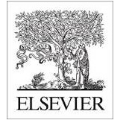Many force-gradient explicit symplectic integration algorithms have been designed for the Hamiltonian $H=T (\mathbf{p})+V(\mathbf{q})$ with kinetic energy $T(\mathbf{p})=\mathbf{p}^2/2$ in the existing references. When the force-gradient operator is appropriately adjusted as a new operator, they are still suitable for a class of Hamiltonian problems $H=K(\mathbf{p},\mathbf{q})+V(\mathbf{q})$ with \emph{integrable} part $K(\mathbf{p},\mathbf{q}) = \sum_{i=1}^{n} \sum_{j=1}^{n}a_{ij}p_ip_j+\sum_{i=1}^{n} b_ip_i$, where $a_{ij}=a_{ij}(\textbf{q})$ and $b_i=b_i(\textbf{q})$ are functions of coordinates $\textbf{q}$. The newly adjusted operator is not a force-gradient operator but is similar to the momentum-version operator associated to the potential $V$. The newly extended (or adjusted) algorithms are no longer solvers of the original Hamiltonian, but are solvers of slightly modified Hamiltonians. They are explicit symplectic integrators with symmetry or time-reversibility. Numerical tests show that the standard symplectic integrators without the new operator are generally poorer than the corresponding extended methods with the new operator in computational accuracies and efficiencies. The optimized methods have better accuracies than the corresponding non-optimized counterparts. Among the tested symplectic methods, the two extended optimized seven-stage fourth-order methods of Omelyan, Mryglod and Folk exhibit the best numerical performance. As a result, one of the two optimized algorithms is used to study the orbital dynamical features of a modified H\'{e}non-Heiles system and a spring pendulum. These extended integrators allow for integrations in Hamiltonian problems, such as the spiral structure in self-consistent models of rotating galaxies and the spiral arms in galaxies.
翻译:在现有的引用中, 许多强力梯{ p\\\\\\\\\\\\\\\\\\\\\\\\\\\\\\\\\\\\\\\\\\\\\\\\\\\\\\\\\\\\\\\\\\\\\\\\\\\\\\\\\\\\\\\\\\\\\\\\\\\\\\\\\\\\\\\\\\\\\\\\\\\\\\\\\\\\\\\\\\\\\\\\\\\\\\\\\\\\\\\\\\\\\\\\\\\\\\\\\\\\\\\\\\\\\\\\\\\\\\\\\\\\\\\\\\\\\\\\\\\\\\\\\\\\\\\\\\\\\\\\\\\\\\\可以\\\\\\\\\\\\\\\\\\\\\\\\\\\\\\\\\\\\\\\\\\\\\\\\\\\\\\\\\\\\\\\\\\\\\\\\\\\\\\\\\\\\\\\\\\\\\\\\\\\\\可以\\\\\\\\\\\\\\\\\\\\\\\\\\\\\\\\\\\\\\\\\\\\\\\\\\\\\\\\\\\\\\\\\\\\\\\\\\\\\\\\\\\\\\\\\\\\\\\\\\\\\\\\\\\\\\\\\\\\\\\\\\\\\\\\\\\\\\\\\\\\\\\\\\\\\



